Farmer John Writes: A Swirl of Work
Harvest Week 9, August 18th – 24th, 2020
Today, I will give you an overview of your farm in motion. The farm sweeps through time, of course, and I could trace an unfolding of a crop, such as the journey of a cucumber from seed to soil to weeding and watering to harvesting, washing and packing. Today, however, I want to give you a picture of a day of the farm in motion. I’ll choose a pack day— Friday, August 14th. I’ll be specific about the first few hours, then morph into a composite of additional overlapping, sometimes interweaving tasks. August is the month when we start preparing fields for the next season, so we are overlaying the current season’s harvest work with the upcoming season’s preparatory work, which might make the day’s activities seem like more of a jumble.
The Recent Storm and Your Baby Chard
Before I start my chronicle, I’d like you to know that we survived last week’s storm with little damage to the crops, though the baby chard we are offering this week got a bit tattered. Most of the leaves are still lovely, but there are some outliers that got shredded a bit.
Friday, August 14th
6 am
- Convene a planning meeting between myself and my two main managers here, Victor and Pollo, veteran farm workers of 10 years and 20 years respectively.
- Victor’s unofficial motto: “As long as I’m still standing, I’ll do the job.”
- Pollo’s unofficial motto: “I don’t work for money. I work to get the job done.”
- The three of us plan out the day, or I suppose a more appropriate phrase is we rough out the day—harvest, seed cover crops, seed baby greens, transplant, bag arugula, pack boxes, till fields…a long list
- David and a small team begin sorting and labeling boxes
7 am
- 14 workers harvest corn—one field hand per row, 9 rows, 2 spotters ensure that ears are not left behind, two people on the harvest wagon distribute the corn to cribs, and Pollo operates the Veg-Veyer
- Several more workers join David in labeling boxes
- A crew member grades and sorts tomatoes
8:30 am
- Corn harvest is complete, about 3000 ears picked; cribs of corn are being unloaded
- A team of 9 begins to harvest cucumbers
- A team of 4 begins to harvest heirloom tomatoes, peppers and eggplant
- A team of 3 begins to harvest regular tomatoes
- Two farmhands resume painting farm buildings, touching up paint where it has chipped off over the years
- Pollo prepares fields for seeding cover crops–clover, alfalfa and timothy; mows sorghum/sudan grass, rotovates…
9:15 am
- Team finishes cucumber harvest—350 cucumbers; those cucumber beds are thinning out (Three more cucumber beds are still coming on.)
- Five of the team harvest honeydew melons
- Four of the team begin to bag arugula
10 am onward, through day’s end, with 40 minutes for lunch—the Friday work carries on
- send harvest estimate/share customization email to shareholders for next pack (How many tomatoes can we offer? How much corn, chard, arugula, melons, etc? What else might we have to offer?)
- bag tomatoes
- sort and wash cucumbers
- I write this newsletter, while my phone rings and pings, emails flood my inbox, people knock on the office door
- pack boxes
- David provides box quality control; Don oversees pack; Nathan shuttles crops to stations; a volunteer makes boxes, a volunteer inserts liners; 14 people pack boxes with sweet corn, honeydew melons, cucumbers, onions, kale, peppers, lettuce, arugula, parsley, regular tomatoes, and heirloom tomatoes; one person closes boxes; one person stacks and palletizes boxes. We pack almost 800 customized boxes in 2 1/2 hours.
- clean and sort garlic
- seed baby lettuce, arugula, baby chard for fall harvest (delayed until next morning. How was it possible that we ran out of time?)
- transplant lettuce and Chinese cabbage for fall harvest
- irrigate carrots (whoops–the irrigator finally broke after 24 years of reliable service—it has since been repaired)
- seed clover and alfalfa
- load two farm delivery trucks for next day’s 4:30 am departure to Chicago
To some, this list of tasks above might seem straightforward: we harvest because the crops are there, weed because the weeds are there, pack because the orders are there. But let’s go into the process more deeply.
There were 4 varieties of corn to choose from for the morning’s harvest. We had to choose one variety, and it was a bit of a guess, because sweet corn matures noticeably in a day’s time, given the right heat and moisture. Which variety’s ears are more full, more juicy? Which variety might be over-ready and already be converting to starch?
Why was Pollo mowing sorghum/sudan grass to seed alfalfa and clover? Why weren’t those fields planted to alfalfa and clover last spring? Those fields were seeded to sorghum/sudan grass because thistles had become pervasive there. Sorghum/sudan grass is reputed to overwhelm thistles, to suffocate them, perhaps even eradicate them.
Why were we seeding other fields to clover and alfalfa, which also should have been seeded last April?
Several fields that would have been seeded last April were pressed into service for raising cucumbers, melons and summer squash, because the fields that were originally scheduled to receive those crops were woefully wet this past spring, wet from this spring’s rains and from the past 3 seasons’ accumulation of moisture. I had to reconfigure our whole rotation plan to find a place for these crops. They were planted into fields that were not suitably prepared in the prior year to grow these crops, so I was not confident in my decision, but they had to go somewhere. It turned out that these fields that I was not confident in grew the most abundant cucumbers and melons we have ever produced here. (This seems like a good place to point out the problems with thinking I know things. I was sure those re-purposed fields wouldn’t grow great crops. Wrong. Read Farm News, Week 2: On Love and Opinions.)
We bagged arugula. An interesting thing about arugula—at a certain point in its development, it grows crazily fast. We harvested 46 crates from one bed one day; two days later, we harvested 68 crates of arugula from the bed right next to the first bed. It grew about 50% in two days. (It was our fourth attempt at growing arugula this season; the first three were thwarted by weeds that far outnumbered the arugula.) With the passage of two more days, I anticipate the third bed of arugula will yield 90 crates.
On the topic of speedy maturation, I have already mentioned that sweet corn can quickly go from under-ready to over-ready; it can take about 3 days. Mizuna, like arugula, can go from the perfect size to gangly in 3 days; perfectly mature heads of lettuce can bolt in 3 days of heat; cilantro and basil can go from ready-to-harvest to flowering in two or three days.
Also consider that throughout this day, we were loading and unloading wagons, trailers and trucks; mobilizing crews; storing; removing; counting; cleaning; documenting…we were also delivering a truckload of shares to community sites and a vanload of home deliveries.
A few more considerations—these tasks are often going on simultaneously, meaning that the crew or at least the team leads have to know how to grade tomatoes well (Is this split too deep; is that tomato too soft, etc?), in which cooler to store which crops, which heirloom tomatoes, peppers and eggplant to harvest. What size bags does the arugula go in? (Yes, we have those 16 x 20 bags.) What bags do the tomatoes go in? (Yes, we have those paper bags.) Do the tractors run properly? Do the trucks start? Do we have enough crates, bins, cribs for harvest and storage? Do we have a reliable inventory of crops so we know what to offer shareholders in the harvest estimate/share customization email? Should we put wings on the subsoiler shanks that will lift up the persistently soggy soil in some parts of the farm to dry it out better? (We’ll try these wings.) Did enough volunteers come to help pack the boxes? (Yes, about 20.) Do we have enough clover and alfalfa seed for 10 fields? (Yes, 200 pounds.) Is the ice machine working? (Yes.)
We have about 20 people who work here in the fields. I decided this week to have the main crew start at 7 am, as opposed to the 6 o’clock start that had been the norm here for months. This coming week, we will go back to a 6 am start for everyone, or we won’t be able to keep up with all the work.
The day’s work I chronicled above—it was a routine day, not a day exceptional for its busyness, for its demands; it was just a routine day.
I have heard several people refer to this farm as peaceful—maybe in their dreams.
Warmly,
Farmer John




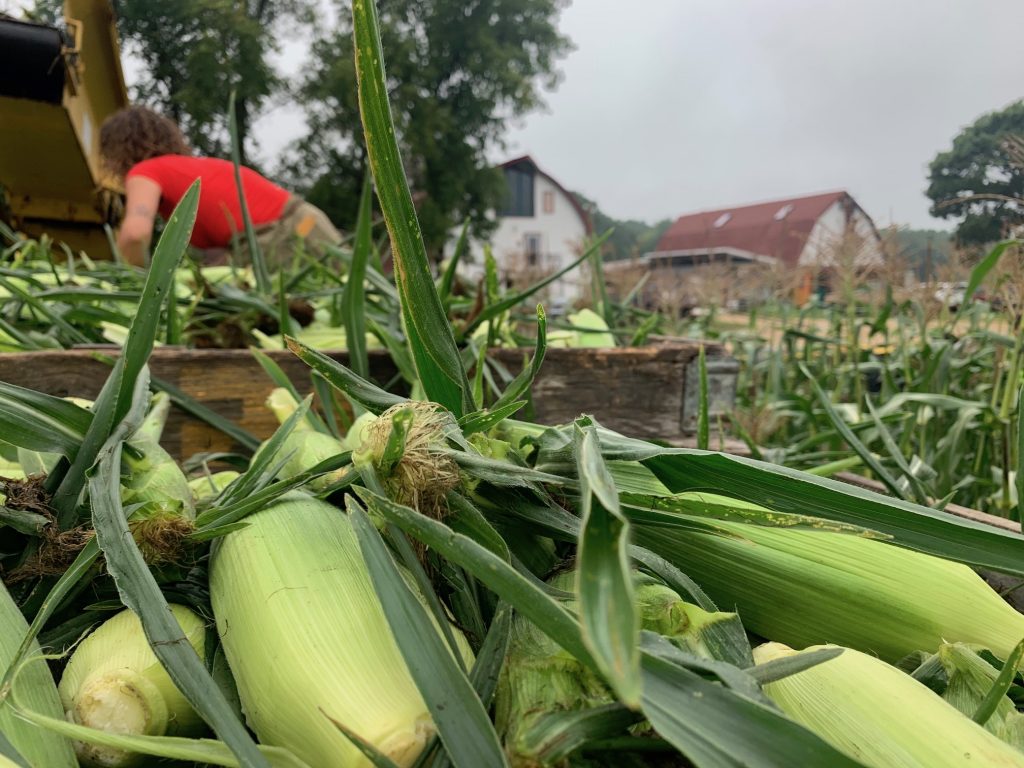

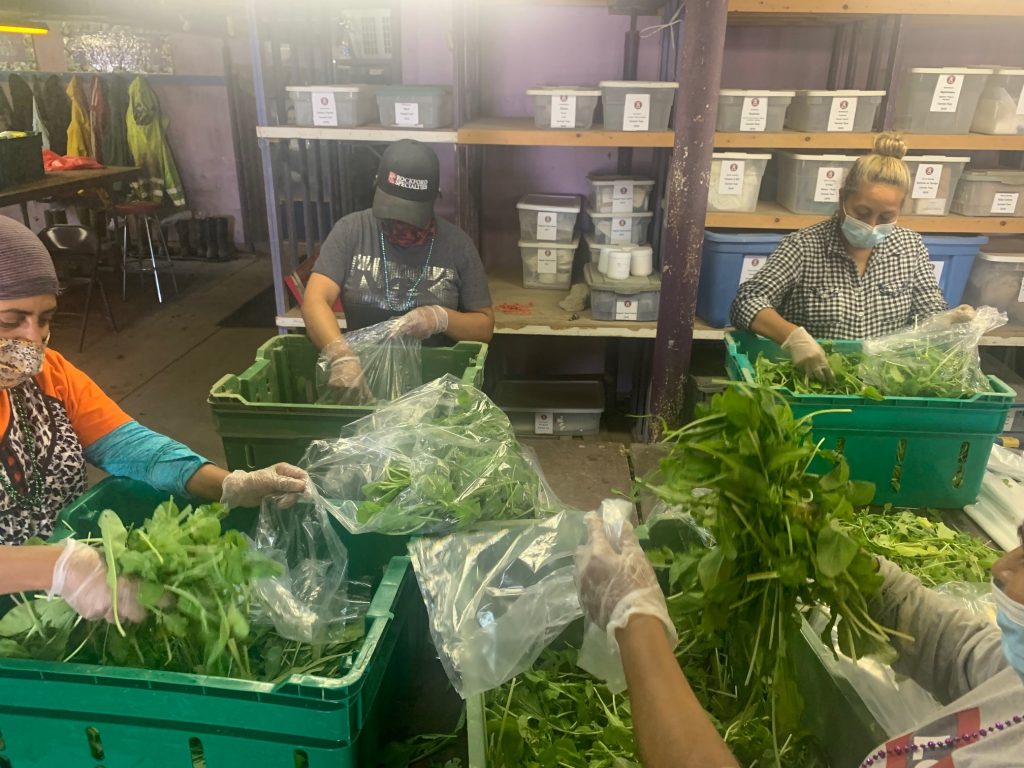
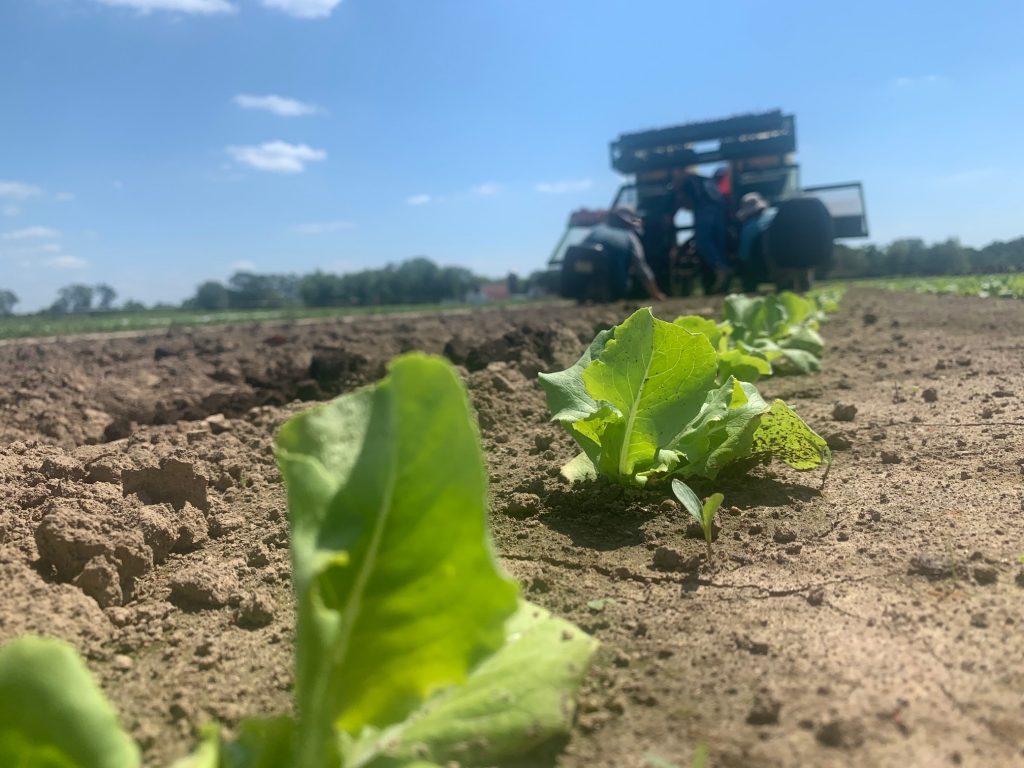
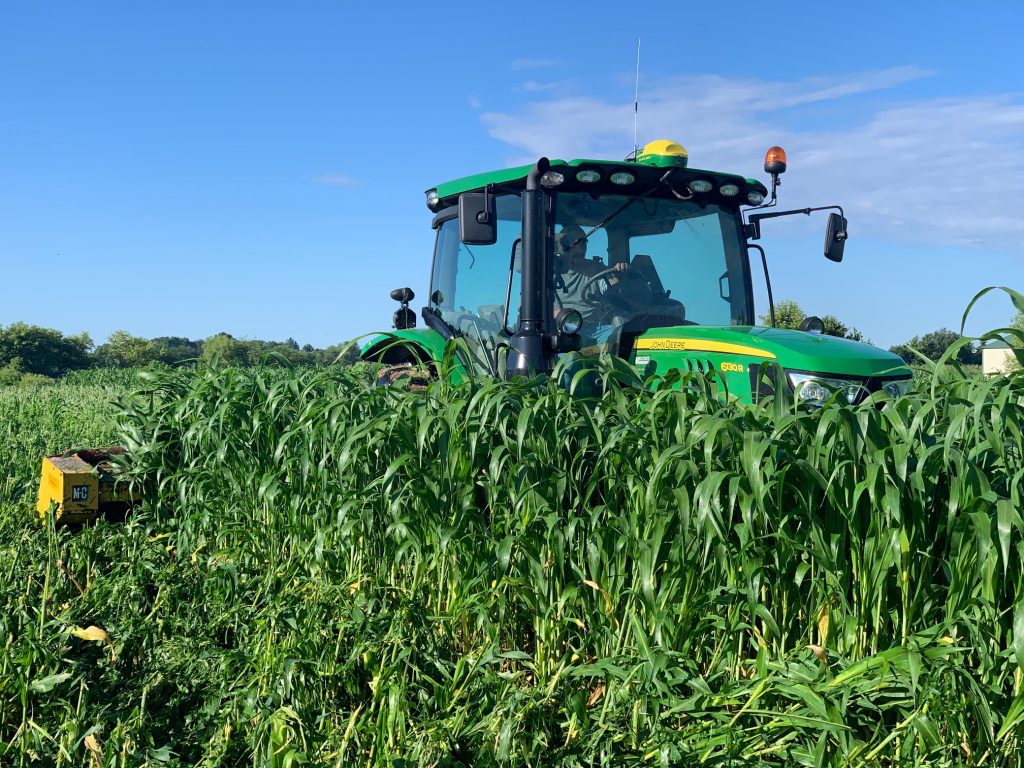

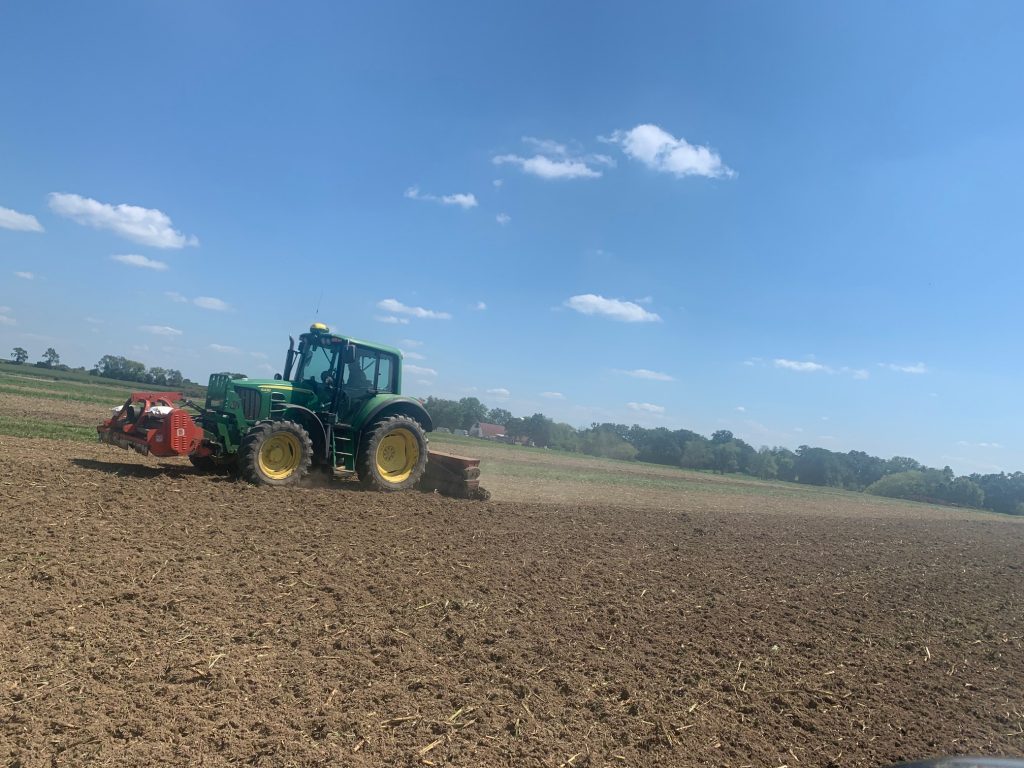


Thank you for the day in the life of the farm. Wow! I imagine not documented in your newsletter is work you may do planning in the evening.
My wife and I used to be part of a bicycle club that included people with wide varieties of political opinions and jobs. An accountant with a fiscally conservative focus. Teachers with socially progressive views. And many of us in between. I recall many a lively discussion with some of the non-teachers talking about how easy it must be to be a teacher with short work days and summers off. Of course, and quite righteously, the teachers clued us in to what it was really like to teach. Much like how the farm really works, we can’t know unless we listen with an open heart and mind.
Very interesting, Mark, and insightful. I appreciate your illuminating posts. You might like to re-visit this week’s Farm News; I edited it a bit to make it more…I suppose the word could be more “accurate,” at least more “thorough.”
Fascinating. This is so cool.
This is part of why I resonate so well with parts of Manhattan–hubbub galore.
Happy Birthday, Farmer John (after the fact)!! I’ve been a shareholder for several years now and I have appreciated the wonderful vegetables (and fruit) from your farm. We’ve also enjoyed reading all the “episodes” of Farm News, that read like an adventure series! Realizing that I haven’t properly expressed our appreciation yet, this seemed like an opportune time to thank you for all your hard work raising beautiful, delicious crops, and for all your insights on farming and life in general that you share with us through your Farm News (blog)! Wishing you good health and happiness always! Thanks for enriching our lives with great food and a view of what farming really is like!
Very nice from you, Patricia. Thank you for the good wishes and your support of the farm over the years. I like that you refer to Farm News as an “adventure series.”
I need a nap just from reading that! Thanks very much for the perspective…not only is there a tremendous amount of physical labor involved but a lot of brain power needed to figure out the logistics and coordinating. Will definitely keep this in mind when eating my delicious veggies in my upcoming delivery. (And a happy belated birthday!)
Thank you, Josh. The logistics and choreography do tax my brain at times. It’s a state I sometimes refer to as bewilderment.